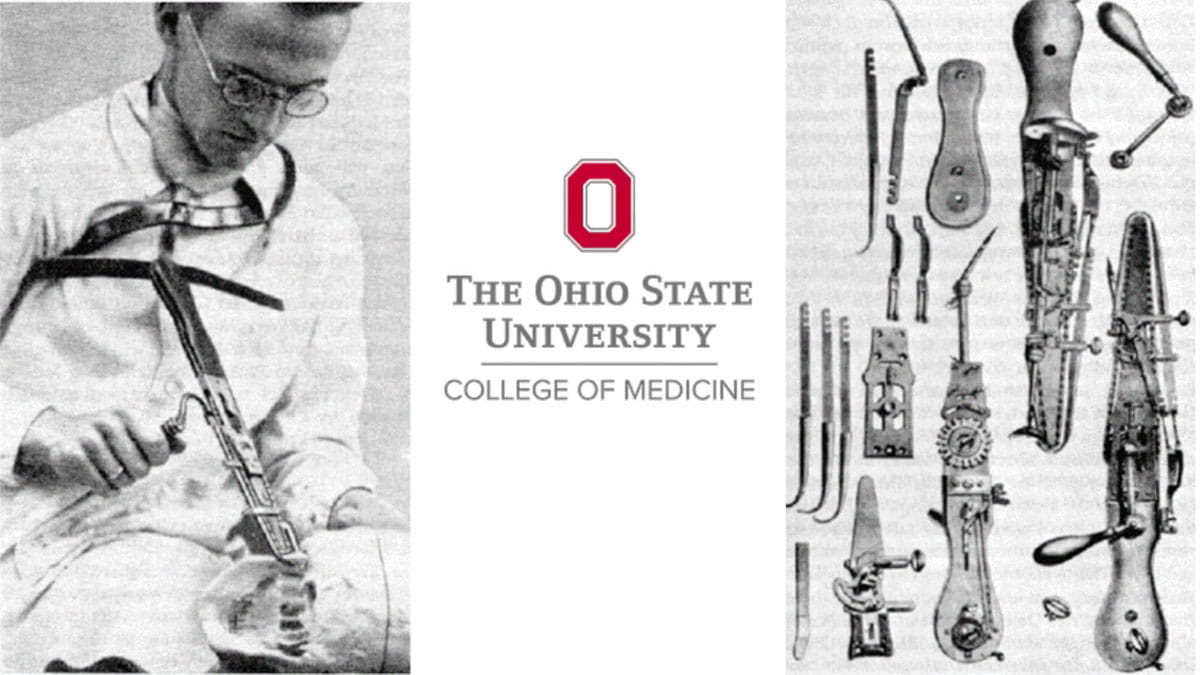Modern chain saw or medical device? A digital reconstruction of old surgical tool assigns the right category
 Orthopedic surgeries such as amputations have been performed for centuries. Until the modernization of medicine, physicians would use blunt tools such as hammers, chisels, hand saws and drills to cut through bone. That is, unless your surgeon was a butcher who had cleavers and other heavy blades that were used on livestock. Beyond using these rudimentary tools, few surgeons were trained to sterilize their tools, and anesthesia wasn’t always an option for patients. With the combination of tools splintering bone fragments into the body, unsanitary practices and no anesthesia, patients suffered a lot of physical traumas in surgery that, in some cases, led to death.
Orthopedic surgeries such as amputations have been performed for centuries. Until the modernization of medicine, physicians would use blunt tools such as hammers, chisels, hand saws and drills to cut through bone. That is, unless your surgeon was a butcher who had cleavers and other heavy blades that were used on livestock. Beyond using these rudimentary tools, few surgeons were trained to sterilize their tools, and anesthesia wasn’t always an option for patients. With the combination of tools splintering bone fragments into the body, unsanitary practices and no anesthesia, patients suffered a lot of physical traumas in surgery that, in some cases, led to death.
However, in 1830, German surgeon Bernhard Heine invented an osteotome that worked differently than other surgical tools at that time. The Heine osteotome was the first tool created to exclusively cut human bone. The osteotome blade had an ingenious design in which the outer edge had teeth, like a chain saw, and the surgeon could manually turn the chain with a crank lever. Heine’s invention not only made bone cutting more precise and an easier task for surgeons, but resulted in less debris, making healthy patient recovery more likely.
A recent study by John LaRocco, PhD, research-scientist in the Department of Psychiatry and Behavioral Health at The Ohio State University College of Medicine, and Eric Zachariah, an undergraduate student in Ohio State's College of Engineering, virtually recreated the Bernhard Heine osteotome to study its design in comparison to modern medical tools and tools like the motorized chain saw, since the teeth of the osteotome work like a chain saw but its overall function was for surgery. As co-author, Zachariah provided feedback on an earlier draft and software repository. In this comparison, the question lies, was the Heine osteotome the beginning of modern medical tools or does it more closely resemble the chain saw?
In his study, Dr. LaRocco lays out key attributes of the chain saw and the osteotome and how the two designs intuitively aid the user. First, Dr. LaRocco points out that the length and weight of the osteotome are different from the chain saw in an especially important way. The modern chain saw is much heavier and longer, which increases cutting ability, while for the osteotome, how something is cut is more important.
“The shorter length of the osteotome, relative to the chain saw, allows for greater precision,” Dr. LaRocco says. “Precision is far more important in surgery than in woodcutting.”
Second, Dr. LaRocco points out that although the chain saw and osteotome have similar mechanisms for rotating the chain in an efficient way, the osteotome is hand-cranked, while the chain saw is driven by a motor. This also highlights how certain key differences point toward a purposeful design for both tools.
Despite these major differences, Dr. LaRocco’s found that the Heine’s osteotome more closely resembles a contemporary chain saw than a contemporary bone saw when inspecting their mechanical design, instead of their designed use.
Modern bone saws are rotary saws, which provide a cleaner cut than the chain design of the osteotome. Additionally, modern surgical tools, like the chain saw, are motorized, reducing human error.
Although the osteotome may not be something that we’d use in modern medicine, it was the first steppingstone in creating tools exclusively for human surgery.
“The chain osteotome revolutionized orthopedic surgery because it greatly improved cutting efficiency, surgical ergonomics and patient comfort,” Dr. LaRocco says. “Today, orthopedic surgeons possess a wide range of mechanical and powered tools, but Heine’s invention was their direct ancestor.”
